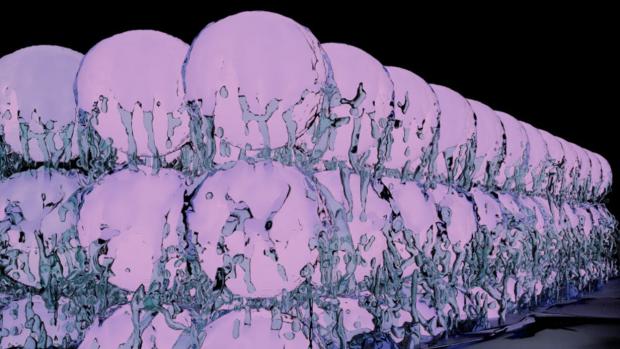
Breaking News
 "Power That Goes Unpunished Only Learns One Lesson: It Can Do Whatever It Wants..."
"Power That Goes Unpunished Only Learns One Lesson: It Can Do Whatever It Wants..."
 Japan To Resume Operations At World's Largest Nuclear Plant 15 Years After Fukushima Disaster
Japan To Resume Operations At World's Largest Nuclear Plant 15 Years After Fukushima Disaster
 State Department Recalls 29 Biden-Appointed Ambassadors
State Department Recalls 29 Biden-Appointed Ambassadors
 Holy Awakening Gains Momentum As Biblical 'David' Film Soars At Box Office
Holy Awakening Gains Momentum As Biblical 'David' Film Soars At Box Office
Top Tech News
 Perfect Aircrete, Kitchen Ingredients.
Perfect Aircrete, Kitchen Ingredients.
 Futuristic pixel-raising display lets you feel what's onscreen
Futuristic pixel-raising display lets you feel what's onscreen
 Cutting-Edge Facility Generates Pure Water and Hydrogen Fuel from Seawater for Mere Pennies
Cutting-Edge Facility Generates Pure Water and Hydrogen Fuel from Seawater for Mere Pennies
 This tiny dev board is packed with features for ambitious makers
This tiny dev board is packed with features for ambitious makers
 Scientists Discover Gel to Regrow Tooth Enamel
Scientists Discover Gel to Regrow Tooth Enamel
 Vitamin C and Dandelion Root Killing Cancer Cells -- as Former CDC Director Calls for COVID-19...
Vitamin C and Dandelion Root Killing Cancer Cells -- as Former CDC Director Calls for COVID-19...
 Galactic Brain: US firm plans space-based data centers, power grid to challenge China
Galactic Brain: US firm plans space-based data centers, power grid to challenge China
 A microbial cleanup for glyphosate just earned a patent. Here's why that matters
A microbial cleanup for glyphosate just earned a patent. Here's why that matters
 Japan Breaks Internet Speed Record with 5 Million Times Faster Data Transfer
Japan Breaks Internet Speed Record with 5 Million Times Faster Data Transfer
Theoretical "supersolid" state of matter created in two separate studies

Now one such state, first proposed almost 50 years ago, has been created in experiments for the first time. Say hello to the supersolid, a state where atoms simultaneously exhibit a crystalline structure but still flow like a frictionless fluid.
The concept of a supersolid arose from the Nobel Prize-winning discovery in the 1970s of a superfluid, a liquid that has zero viscosity, meaning it flows with no resistance or "thickness." At the time, British physicist David Thouless theorized that a state of matter could exist where atoms are both free flowing like a superfluid, but also arranged in a crystalline structure, making it a supersolid.
Earlier attempts to produce this state used helium, the element that first exhibited superfluidity, but it was never brought to fruition. Now, two simultaneous – but independent – studies, one from ETH Zurich and one from MIT, have produced supersolids from Bose-Einstein condensates, using two different techniques.

 Advanced Propulsion Resources Part 1 of 2
Advanced Propulsion Resources Part 1 of 2

